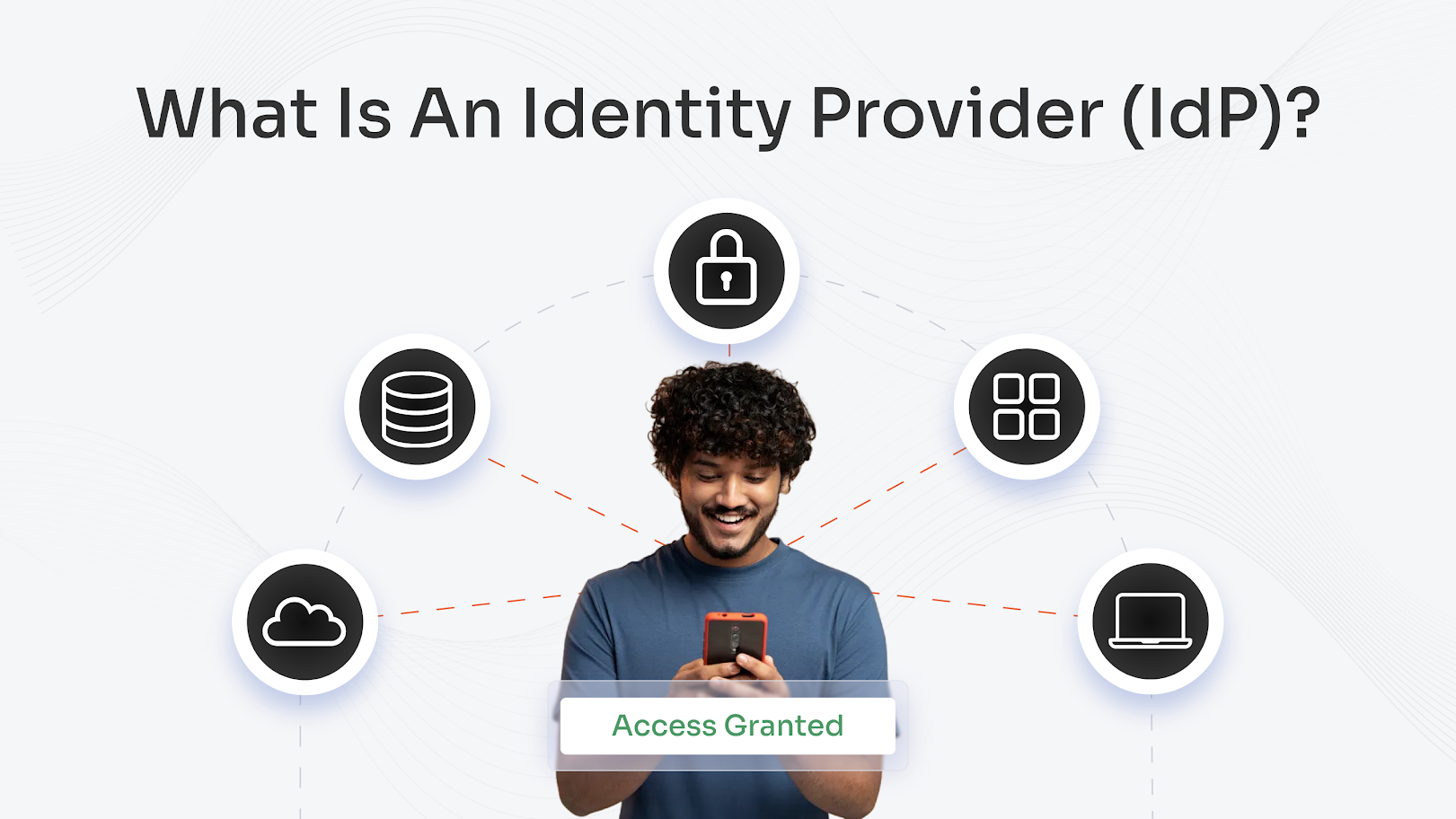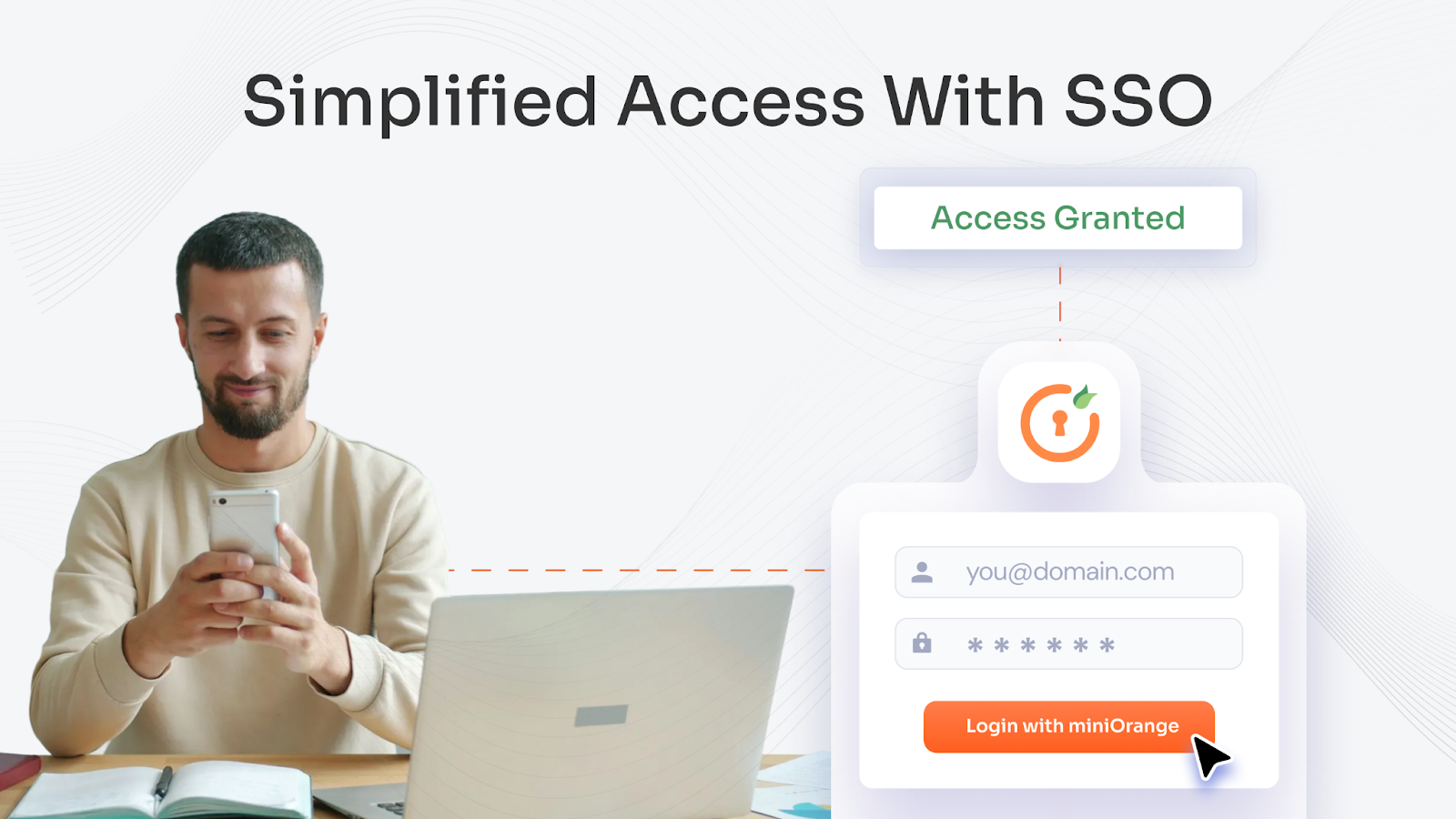What is Identity as a Service (IDaaS)?
Identity as a Service (IDaaS), also known as identity and access management (IAM) as a service, is a cloud-based authentication solution managed by third-party providers. IDaaS firms offer cloud-based authentication or identity management services to enterprises on a subscription basis.
The concept of 'Anything-as-a-Service' (XaaS) in IT refers to delivering functionalities, such as identity management, through third-party providers via the cloud rather than deploying them on-site. For instance, Identity-as-a-Service (IDaaS) manages authentication and access control remotely, much like how Gmail provides email services over the cloud.
The primary objective of an identity service is to authenticate users—confirming they are who they claim to be—and to appropriately regulate their access to software applications, files, and other resources. Managing these services on-site can be difficult, particularly as new challenges arise, such as adapting identity provisioning systems to accommodate employees using a variety of devices under Bring Your Own Device (BYOD) policies. Conversely, IDaaS offers a streamlined, centralized cloud-based system developed by identity management experts. These specialists have extensive experience resolving common and complex identity issues across numerous organizations, making IDaaS a robust and efficient identity-as-a-service solution for modern enterprises seeking reliable access management without the complexity of in-house systems.
Key Features of IDaaS
Identity as a Service (IDaaS) provides a robust framework for managing identities and access in the digital age. Here are some key features that make IDaaS an important solution for modern enterprises:
- Single Sign-On (SSO): SSO simplifies the user experience by allowing individuals to access multiple applications and services with a single set of credentials. By minimizing the number of times users need to log in, the SSO solution enhances productivity and reduces the chances of password fatigue.
- Multi-Factor Authentication (MFA): MFA adds an extra layer of security by requiring users to provide two or more verification factors to gain access to resources, making unauthorized access significantly harder. With over 15+ MFA methods available, organizations can tailor authentication processes to suit diverse user needs and scenarios, ensuring robust protection for sensitive data in various environments, particularly those involving Identity as a Service (IDaaS) providers.
- Access Management: Efficiently controls who can access what within an organization. IDaaS solutions provide dynamic access controls, adjusting permissions based on real-time assessments of risk and behavior patterns, which is essential for identity and access management as a service.
- Directory Integration: Seamlessly integrates with existing directory services, Directory as a Service (DaaS) to manage user identities across various platforms. This integration ensures that all users' identity and access rights are centrally managed, simplifying administration and enhancing security.
- User Authentication: A core component of IDaaS, user authentication verifies the identity of users attempting to access systems. This feature is integral to maintaining security protocols and ensuring that access is granted only to legitimate users.
- Provisioning: Provisioning refers to the process of creating, managing, and deactivating user access to system resources automatically. Provisioning in IDaaS helps in efficient resource management, ensuring that the rights and privileges are aligned with the organizational policies and changes in employment status.
How IDaaS Works
Identity as a Service (IDaaS) integrates advanced cloud-based technologies into existing IT ecosystems to manage user identities and access permissions efficiently. Here’s a detailed explanation of the architecture, workflow, and integration process of IDaaS:
Architecture and Workflow:
- Subscription and Access: Upon subscribing to an IDaaS solution, an organization is provided with an API (Application Programming Interface) and/or a centralized configuration portal. These tools are essential for setting up and managing the integration.
- Integration: Organizations utilize the API or configuration portal to connect their application suite with the identity management services offered by the IDaaS provider. This integration is crucial for enabling features such as Single Sign-On (SSO), social login, and adaptive authentication.
- Authentication Request: When a user attempts to access an application, the system sends an authentication request to the IDaaS provider via the API. This includes verifying the user’s credentials and asserting their identity.
- Identity Verification: The IDaaS system processes this request by checking the user’s identity against secure, cloud-hosted databases.
- Access Grant: Once the user is authenticated, the IDaaS system authorizes and grants access to the requested resources, ensuring secure and seamless entry.
- Authorization (Optional): Beyond authentication, the IDaaS may perform authorization checks using predefined policies to determine the resources a user is permitted to access.
Integration with Existing IT Ecosystems
- Seamless Integration: IDaaS is designed to seamlessly integrate with an organization’s existing IT infrastructure without significant disruptions. This integration involves linking the IDaaS solution with various business applications, directory services, and security protocols already in place.
- Compatibility and Customization: The flexibility of IDaaS allows it to be customized to fit the specific needs of an organization, whether it involves complex enterprise systems or simpler web-based applications. This customization capacity makes it a versatile choice for businesses of all sizes.
- Centralized Management: By centralizing identity management, IDaaS reduces the complexity and administrative overhead associated with the internal management of user accesses and identities. It provides a unified view and control panel that helps IT teams manage settings, policies, and access controls more efficiently.
Benefits of Using IDaaS
Identity as a Service (IDaaS) provides significant advantages for businesses aiming to enhance their operational efficiency, security, and compliance with regulatory requirements. Here are the primary benefits of adopting an IDaaS solution:
- Cost-Effectiveness and Scalability: IDaaS solutions reduce the need for heavy upfront investment and ongoing maintenance costs associated with in-house identity management systems. They offer a scalable cloud-based model that allows businesses to adjust their usage easily based on growth or fluctuating demand without significant additional costs. This scalability ensures that businesses can expand their identity management capabilities as they grow, without incurring prohibitive expenses.
- Enhanced Security Measures: IDaaS providers specialize in security, offering advanced measures like Multi-Factor Authentication (MFA), encryption, and continuous monitoring to protect against unauthorized access and potential breaches. By leveraging the expertise of dedicated security professionals, businesses can significantly lower their risk of data leaks and security incidents.
- Seamless User Experience: A key feature of IDaaS is its ability to provide a streamlined and user-friendly login experience across various platforms and applications. Features like Single Sign-On (SSO) enhance user satisfaction by minimizing login complexities and reducing password fatigue, thus fostering a more productive work environment.
- Regulatory Compliance Support: With increasing regulations around data privacy and security, IDaaS solutions help businesses stay compliant with relevant laws and standards. IDaaS providers stay updated on the latest compliance requirements and integrate necessary controls into their solutions to ensure that their clients meet these regulatory demands effortlessly.
- Ease of Integration: IDaaS allows for seamless integration with existing IT ecosystems, enabling centralized management of identity policies across various user groups such as employees, customers, partners, and vendors, while also offering centralized password management to enhance security and simplify access control.
- Future-Proofing: As security landscapes evolve, IDaaS providers continuously update their offerings to include the latest security technologies and best practices. This ongoing innovation helps businesses stay ahead of emerging threats and technological changes, securing their operations for the future.
Use Cases of IDaaS
- Remote Workforce Management: With the increasing adoption of remote work, organizations need secure and seamless ways to manage employee access to corporate resources from anywhere. IDaaS enables centralized identity management, ensuring employees can securely log in to applications and systems without compromising on security. Features like Multi-Factor Authentication (MFA) and Single Sign-On (SSO) enhance security while improving user experience.
- Managing Third-Party Access: Businesses often collaborate with vendors, contractors, and partners who require limited access to specific resources. IDaaS solutions simplify the management of third-party identities by enforcing strict access controls, monitoring sessions, and granting time-bound or role-based permissions. This ensures that external users only access what they need, minimizing security risks.
- Supporting Bring Your Own Device (BYOD) Policies: IDaaS empowers organizations to embrace BYOD policies without compromising security. By enabling device-agnostic authentication and secure access to enterprise applications, employees can use their personal devices to work while adhering to the organization's security policies. Advanced features like device posture check further enhance protection by verifying device compliance before granting access.
What is the difference between IDaaS and IAM
Identity and Access Management (IAM) and Identity as a Service (IDaaS) are both crucial in managing user identities and access rights within organizations, but they differ in their delivery models and specific functionalities. Below is a comparison of the two, highlighting three key differences:
| Aspect | IAM | IDaaS |
|---|---|---|
| Delivery Model | IAM can be implemented on-premises or hosted by third parties. | IDaaS is delivered as a service, typically via the cloud, by third-party providers. This means IDaaS is a subset of IAM, specifically provided as SaaS. |
| Management and Maintenance | Organizations need to manage and maintain IAM systems themselves, which includes hardware, software updates, and security patches. | IDaaS offloads the management and maintenance responsibilities to the service provider, who handles updates, security, and infrastructure. |
| Cost and Scalability | IAM, especially when implemented on-premises, involves significant upfront costs for infrastructure and ongoing expenses for maintenance. Scalability can be challenging and costly as it often requires additional hardware and software. | IDaaS offers a more cost-effective model with lower upfront costs and a subscription-based pricing structure. It allows for easy scalability, adapting to changing needs without major investments in physical infrastructure. |
| Ease of Integration | Integration can be complex and requires significant IT resources, especially when connecting disparate systems or updating legacy systems. | IDaaS is designed for easy integration with a wide range of applications and systems, providing built-in support for common standards and protocols. |
| Security and Compliance | Organizations are fully responsible for ensuring their IAM solutions comply with relevant laws and regulations, which can be resource-intensive. | IDaaS providers often ensure compliance with the latest security standards and regulations, reducing the compliance burden on the organization. |
These distinctions highlight that while both IAM and IDaaS aim to manage identity and access, IDaaS offers a more streamlined, cost-effective, and maintenance-free solution particularly suited for organizations looking for rapid deployment and scalability without significant initial investment.
Conclusion
Identity as a Service (IDaaS) emerges as a transformative solution in the realm of identity and access management, catering to the evolving needs of modern enterprises. By leveraging cloud-based infrastructure and advanced security measures, IDaaS simplifies user authentication, enhances security, and streamlines access management across diverse use cases such as remote workforce management, third-party access, and BYOD policies. Its cost-effective and scalable model, coupled with seamless integration and future-proofing capabilities, makes it an ideal choice for organizations seeking to optimize their IT ecosystems without the complexities of in-house systems. As businesses continue to navigate the digital landscape, IDaaS stands as a cornerstone for secure and efficient identity management, empowering enterprises to focus on innovation and growth with confidence.
Meanwhile, check out our other blogs below




Leave a Comment